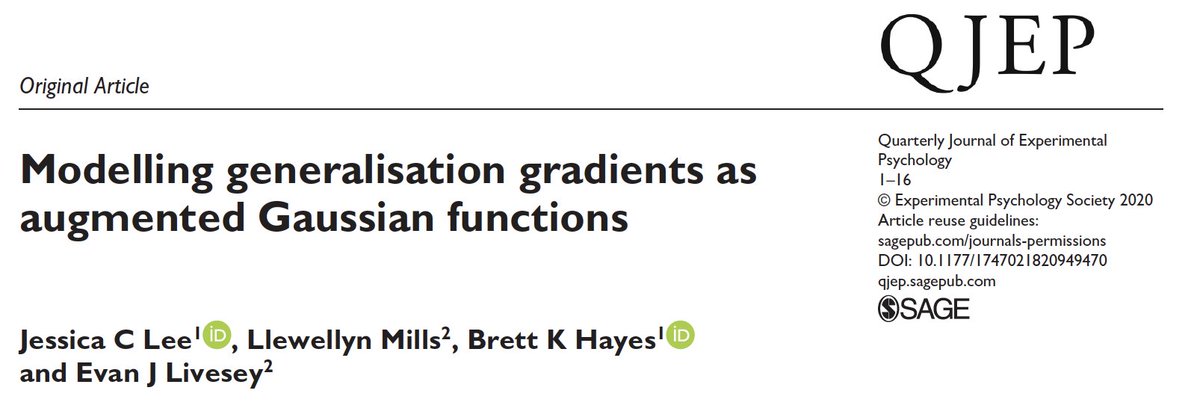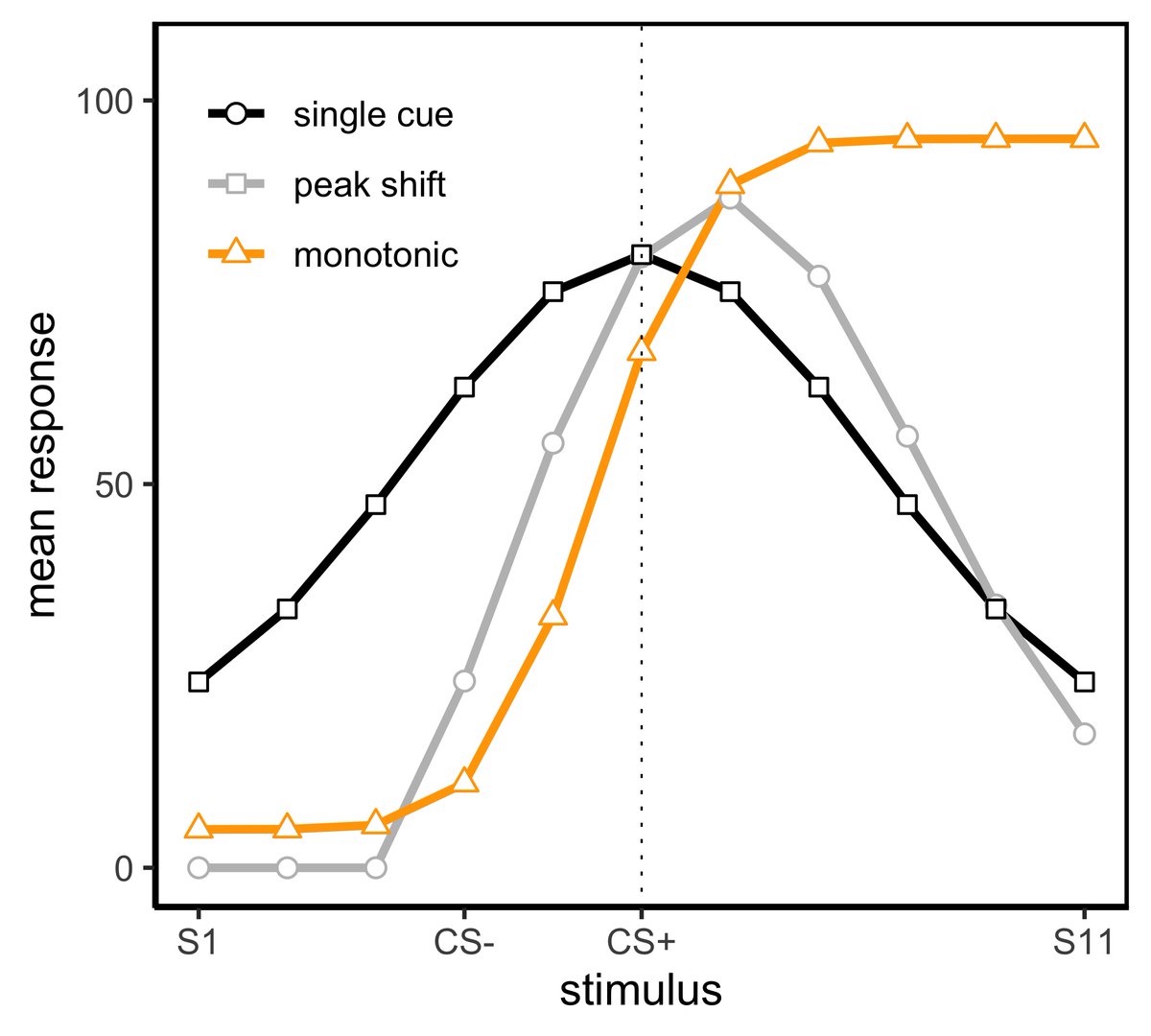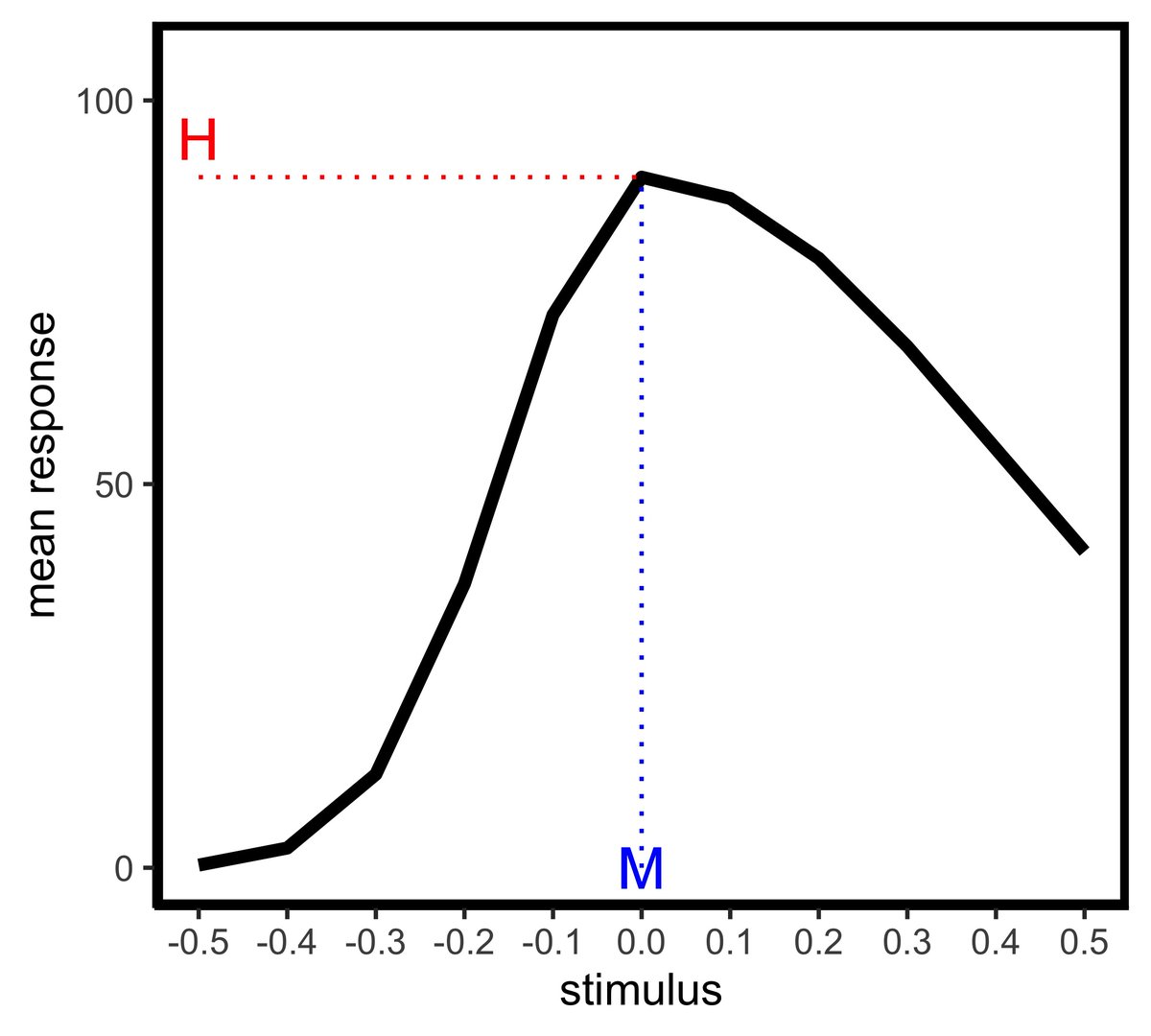New paper alert! Now published in @SageQJEP with @LlewMills, Brett Hayes, and Evan Livesey.
Something that I& #39;ve been thinking about for YEARS - is there a better way to analyse generalisation gradients? Decide for yourself :)
Download here: https://jessicaleephd.wordpress.com/publications/
Thread">https://jessicaleephd.wordpress.com/publicati... 1/n
Something that I& #39;ve been thinking about for YEARS - is there a better way to analyse generalisation gradients? Decide for yourself :)
Download here: https://jessicaleephd.wordpress.com/publications/
Thread">https://jessicaleephd.wordpress.com/publicati... 1/n
In #AssociativeLearning, researchers often want to know whether a particular effect is present in their data (e.g., peak shift) or whether an experimental manipulation changes the breadth or shape of the generalisation gradient (group differences).
2/n
2/n
For peak shift, it& #39;s typical to conduct two sets of tests to show a significant "rise" and "fall" in the dependent variable.
For group differences, it& #39;s typical to report group interactions with linear and/or quadratic trend.
Simple, right?
3/n
For group differences, it& #39;s typical to report group interactions with linear and/or quadratic trend.
Simple, right?
3/n
Well, one issue with assessing peak shift in this way is that you can& #39;t quantify how much/far the peak has shifted, only how reliably the gradient goes up and down.
4/n
4/n
There& #39;s also questions about whether you should be correcting for multiple comparisons by selecting the peak stimulus after observing the data.
5/n
5/n
Human data often display a high amount of individual variability, making it hard to detect effects statistically, and we can& #39;t really say much when we get a null effect. Boo...
6/n
6/n
Enter the augmented Gaussian - a function with 4 parameters (mean, height, and 2 width parameters that allow the function to be asymmetrical) that each have an intuitive interpretation wrt generalisation.
7/n
7/n
In this method, we fit an augmented Gaussian function to individual gradients in a hierarchical Bayesian framework and estimate each of the 4 parameters at the subject- and group-level.
8/n
8/n
Check out the paper for re-analyses of data using this method and a demonstration of how to infer the presence of peak shift, area shift, and group differences using the posteriors of the augmented Gaussian.
9/n
9/n
Special thanks to 4 reviewers for a bunch of helpful suggestions that dramatically improved the paper, including @ajwills72 and @joaquinmoris
Github repo: https://github.com/jessica-c-lee/bayesian-curve-fitting
10/n">https://github.com/jessica-c...
Github repo: https://github.com/jessica-c-lee/bayesian-curve-fitting
10/n">https://github.com/jessica-c...

 Read on Twitter
Read on Twitter




